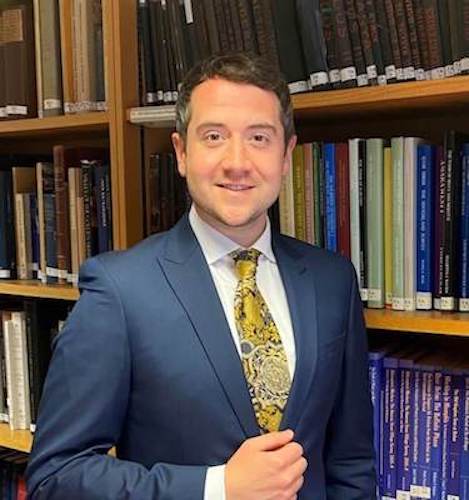Get ready for a transformative journey through the pages of history with our exclusive tour, ‘Queens and Goddesses of Ancient Egypt’.
This 14-day adventure is meticulously crafted for solo female travellers offering a one-of-a-kind experience where you’ll delve deep into how female power shaped ancient Egypt.
Travel in the footsteps of intrepid women travellers like Amelia Edwards and immerse yourself in the tales of legendary figures such as Cleopatra VII, Isis, Hathor, and Sekhmet. Explore awe-inspiring temples and intricately adorned tombs, deciphering the stories etched in ancient hieroglyphs.
Joining you on this extraordinary journey is Dr. Edward Scrivens, a renowned Egyptologist, from The Egyptian Exploration Society, specializing in female power in Ancient Egypt.
Imagine walking the bustling city of Alexandria and taking in the serene landscapes of Aswan and of course the Great Pyramids of Giza, and onto Luxor, and Alexandria.
Your constant companions are the influential female figures who shaped the course of ancient Egyptian civilization.
If you’re looking for a tour, beyond the cookie-cutter guidebook experience, this is for you. We’ve tailored it specifically for women looking for the opportunity to meet like-minded travel companions, and who love adventure but also want to feel safe.
With carefully selected accommodations, expert female guides, and activities focused on empowerment and cultural immersion, our tour provides a safe and supportive environment.
The tour is paced to give you space to relax, sample delicious Egyptian food, and time to forge new friendships.
Don’t miss the chance to be part of this exclusive tour. Join us on ‘Queens and Goddesses of Ancient Egypt’ and let the magic of literature and history unfold before your eyes.
Dr Edward Scrivens, from the Egypt Exploration Society, is our resident expert. Edward is a renowned expert on feminine power in Ancient Egypt and loves to share his knowledge. He’s also engaging and funny.
He has a PhD from The Queen’s College, University of Oxford, where he held the Barns Studentship in Egyptology. His research explored the gendered representation of goddesses in tombs and temples of the late New Kingdom, and his ongoing projects continue to explore aspects of gender and religion in ancient Egypt. He lectured as Tutor in Egyptology at Swansea University and taught a course for the EES’s online programme (‘Queens, Pharaohs, Goddesses: Feminine Power in Ancient Egypt’).
Alongside his research and teaching experience, Edward has an active record of outreach work (from museum talks to producing online materials), believing that engagement with Egyptian cultural heritage should be accessible and appealing to a diversity of audiences. Outside of Egyptology, Ed has performed as a comedian across the UK and internationally.




In 1873 Victorian novelist and travel writer Amelia B Edwards made a journey that would change the world of Egyptology forever. In 1882 on her return to the UK, Amelia founded the Egypt Exploration Society. Today, the EES continues to support and promote Egyptian cultural heritage, by focusing on innovative projects that put people at the centre of heritage and education.
The EES relies almost entirely on donations from members and the wider public to fund their work. We are very appreciative in their support of this tour and Literary Tours in Egypt is making a donation to the EES for each booking on this tour
SAFETY CONCERNS?
Don’t worry, it’s our top priority. We’ve an organised itinerary, including reliable transport and accommodations. Our experienced staff take care of you from the moment you land.
CALL US we’re very happy to answer your questions.
The tour will introduce you to many stories of influential queens who shaped Egypt’s ancient land. From Hatshepsut, the 18th dynasty pharaoh who defied societal norms, to Cleopatra VII, the last active ruler of the Ptolemaic Kingdom, each queen’s narrative unfolds against the backdrop of temples, tombs, and historical landmarks. Explore Tawosret’s brief yet impactful reign as one of the few female pharaohs and delve into Nefertari’s celebrated role as the principal wife of Pharaoh Ramesses II. Witness the strategic alliances orchestrated by queens like Tiye, whose marriage strengthened Egypt’s diplomatic relations.
Ancient Egyptian mythology is rich with goddesses, you’ll get to meet many of them on this tour. Isis, the goddess of motherhood and magic, unfolds her tale alongside Hathor, the embodiment of joy and love depicted with cow ears or as a cow. Encounter Sekhmet, the lioness-headed deity associated with war and healing, and Nephthys, the guardian of the dead and sister to Isis and Osiris. Delve into the cosmic realms with Nut, the goddess of the sky adorned with stars, and witness the protective nature of Mut, the mother goddess associated with fertility. Amunet, linked with hidden creation forces, and Taweret, the protective goddess of childbirth, add layers to this divine odyssey.
Maybe you’ll recognise yourself in one of them!
The beating heart of Literary Tours is books. We are so grateful to the wonderful writers whose books gave us this inspiration for this tour.
We want to ensure you have nothing to worry about, so breakfast, lunch and dinner are included most days. There are some days when lunch and/or dinner are not included, to give you the chance to explore your own options. These are noted in the itinerary. We are always happy to provide recommendations!